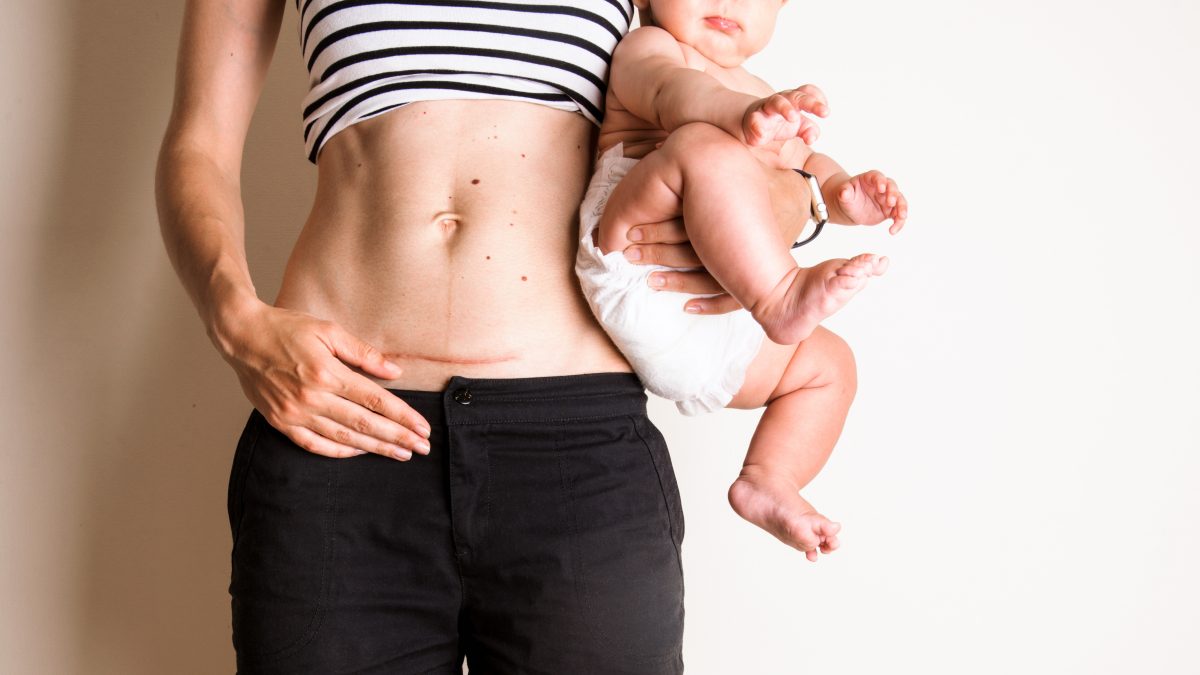Busting 8 Myths And Misconceptions About C-Section
 [ad_1]
[ad_1]
A caesarean section, commonly referred to as a C-section, is a surgical procedure in which a baby is delivered through an incision made in the mother’s abdomen and uterus. It is typically performed when vaginal delivery may pose risks to the health of the mother or the baby, or when it is not possible or safe for the baby to be born vaginally. C-sections can be planned (elective) or done as an emergency procedure during labour. They are usually performed by a trained surgical team, including obstetricians, anaesthesiologists, and nurses, and require post-operative recovery time for the mother. C-sections are a common method of childbirth worldwide and can be a life-saving intervention when medically necessary. However, the process always gets surrounded by myths and misconceptions.
Many people still believe in myths and misconceptions, leading to unnecessary fear and anxiety for expecting mothers who may need to undergo this procedure. Dr Teertha Shetty, Gynaecologist, Nirvi Community busts some of the myths associated with C-section and also shares tips for mothers on how to take care of themselves and their new borns after the surgery.
Myth #1: C-section causes permanent backache
Truth: There is no evidence to suggest that C-section causes backache. However, it is essential to note that backache is a common issue during pregnancy and after delivery, regardless of the mode of delivery. It is caused by changes in posture, weight gain, and hormonal changes during pregnancy.
Myth #2: C-section mothers can’t breastfeed
Truth: C-section mothers can breastfeed their babies. It is essential to note that regardless of the mode of delivery, every mother’s milk supply comes in after delivery. Skin-to-skin contact, proper latch techniques, and breastfeeding support can help make breastfeeding successful after a C-section.
Myth #3: C-section scar will get infected if you have something sour
Truth: Eating something sour has no direct correlation with C-section scar infections. The most common cause of C-section scar infections is poor hygiene and inadequate wound care. It is essential to follow the doctor’s instructions for proper wound care and avoid exposing the wound to bacteria.
Myth #4: You underwent a C-section because you were weak
Truth: There are several reasons why a mother may need a C-section, including medical conditions, fetal distress, and previous C-sections. The decision to undergo a C-section is based on medical necessity and not weakness.
Myth #5: C-section causes your abdomen to droop forever
Truth: A C-section does not cause permanent abdominal drooping. However, like with any surgery, it is essential to take proper care of the wound to avoid complications. Engaging in physical activity, such as pelvic floor exercises, can help tone the abdominal muscles and promote healing.
Myth #6: Losing weight is impossible
Truth: While losing weight after a C-section may be more challenging, it is not impossible. After a C-section, the body needs time to heal, and it is essential to wait until the doctor approves physical activities.
Engaging in physical activity, following a healthy diet, and breastfeeding can help promote weight loss after a C-section. It is important to set realistic goals and give the body time to heal and recover before beginning any weight loss program.
Myth #7: Strict rest for 3 months post-delivery
Truth: Although it’s important to rest and allow the body to heal after delivery, the myth of strict bed rest for three months post-delivery is not true for all mothers.
The amount of rest required may differ based on individual circumstances, and it’s essential to follow the doctor’s advice and listen to your body. Engaging in light physical activity, such as walking, can promote healing and improve circulation. Prioritizing rest and light physical activity can aid in a healthy recovery after delivery.
Myth #8: Can’t have a normal delivery in future
Truth: Women who have had a C-section can have a vaginal birth in the future, known as a VBAC (vaginal birth after caesarean). The decision to have a VBAC should be made after discussing the risks and benefits with a healthcare provider. Women who have had a previous C-section may be able to have a successful VBAC, but there are risks associated with it, such as uterine rupture. It is essential to discuss these risks and benefits with a healthcare provider to make an informed decision.
Here are some tips shared by expert Prutha Pai to make your C-Section breastfeeding journey smoother:
- Feed in a laid-back position
- Use a feeding pillow
- Try football hold while feeding
- Side-lying position with a small pillow at the incision part can be helpful
In conclusion, C-sections are a significant advancement in medical science, offering a safe and necessary option for many expecting mothers. Debunking myths such as backache, inability to breastfeed, and infection from sour food can help expecting mothers make informed decisions, leading to a healthy delivery and postpartum journey.
Read all the Latest Lifestyle News here
Comments
Post a Comment